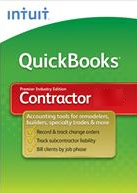
Times were tough, so Remodeler John decided to lower prices below those of his competitors. He promoted a charge-out rate 20% below the industry average, explaining that his overheads were lower than those of larger companies.
The turning point came after advice from his mentor. "You're selling yourself short, John," said the mentor. "With your qualifications and experience, you should charge at least as much as other businesses – if not more. I understand your marketing strategy, but I don't think clients see it that way. They are more likely to interpret lower costs as lower value and quality. In your industry, confidence goes a long way, so you shouldn't be afraid of marketing yourself at a price that reflects your expertise and experience."
Then came the call from his accountant. "Aren't the sales figures great?" said John, getting his bit in first. "Yes," said the accountant, "impressive sales indeed. That's the good news. The bad news is that the business has actually lost money over the last quarter."
This was how John learned that trading for sales and trading for profit could be different. Chasing sales revenue is fine, provided your prices give you a sustainable profit. John hadn't checked his costs for some time, so the unwelcome news from the accountant came as a shock.
Read More
Topics:
Growth Coach,
Bookkeeping For Remodel Contractors,
Remodel Contractor Coach,
Profit and Growth Strategies For Contractors,
High Profit Repeat Construction Clients,
Bookkeeping Services,
Pricing Jobs,
Trading for Profit,
Trading for Sales

































